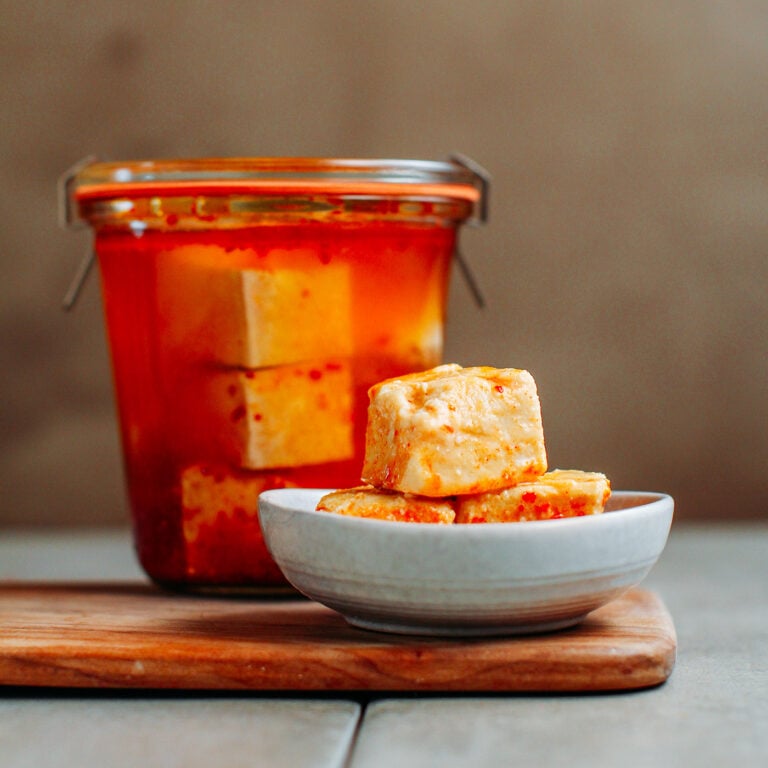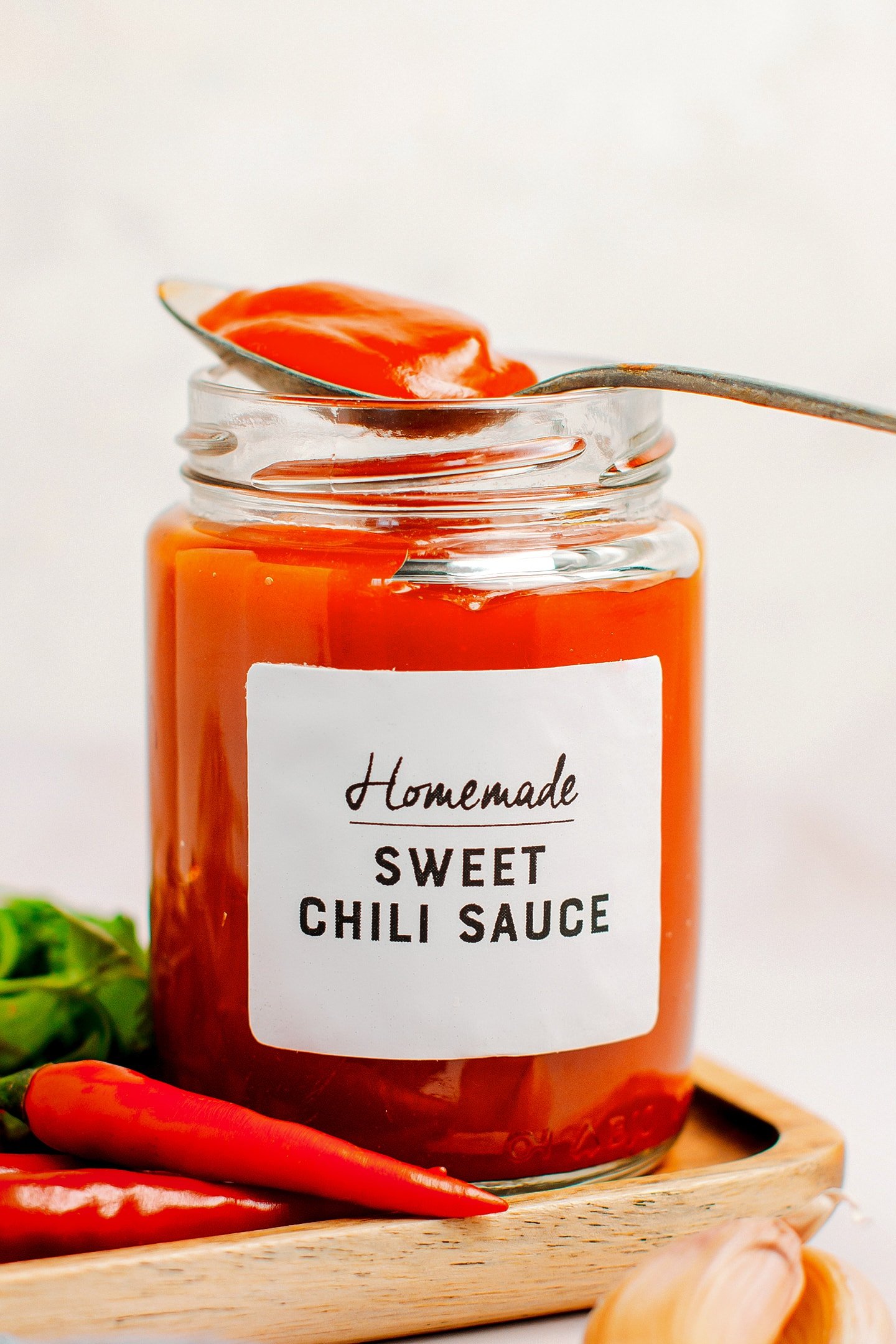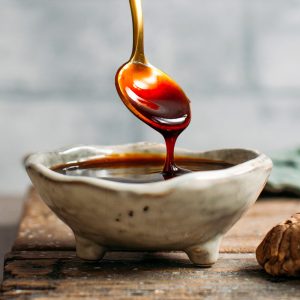This post may contain affiliate links. Please read our disclosure policy.
Learn how to make fermented tofu, also called “Chao,” from scratch! This 4-ingredient condiment is cheesy and tangy and can be used to add plenty of flavor to soups, marinades, dipping sauces, and more!

Since discovering fermented tofu, I have been using it a lot. Whether it is in soups, marinades, or as a dipping sauce, it can be used in many dishes to add extra flavor, umami, and some cheesiness.
The thing is, fermented tofu is not that easy to find, and let’s be honest, I wanted to learn how to make my own. Here is a guide on how to make fermented tofu (also called Chao) from scratch!
📘 What is Chao?
Chao (which is its Vietnamese name) is tofu that is fermented for at least 1 month in a brine that consists of water, salt, and usually rice wine. According to some books, the technique of making fermented tofu appeared in 200 BC in China.
It is quite salty, sometimes spicy, and has a very soft texture, almost like a paste that you could compare to blue cheese. When Chao is fermented for a long time, it takes a strong flavor, which reminds me of a strong camembert.
What’s great about chao is that it keeps for months, if not years, in its brine!
🥣 How to Make Fermented Tofu (Chao)?
Making chao is easy but requires some patience!
Before starting: As with most fermented recipes, taking care of hygiene is critical to the success of the fermentation process. So I recommend using gloves while handling the tofu to prevent bad bacteria.

Preparing the tofu
It starts with the tofu that is boiled for a couple of minutes in salted water. This step not only helps kill some bacteria but also helps the tofu drain more water.
Next, you want to place your tofu on several sheets of kitchen paper towel, cover it with more paper towels, and place a weight on it to press it and remove excess water. I usually use a large iron skillet that is quite heavy. Leave your tofu like this for about 1 and a half hours, and change the paper towel as needed if it becomes too wet.

Fermentation
Next, cut your tofu into 1-inch cubes. Place them on a plate lined with a kitchen paper towel, then place another piece of paper towel on top and cover the whole plate with plastic film.
Now you want to let the tofu ferment for about 2 days at 77-86°F (25-30° Celcius). So as you can guess, this recipe works best in the summer, but it can also be done during winter if you have a warm spot in your house.
After 2-3 days, the tofu should be slightly orange and a bit stinky (see photo below). It may have some white mold as well; that’s okay. If you see black or blue mold, just scrape it off. A quick tip: if the tofu is not stinky enough when you put it in the brine, you will end up with a mild chao. If it is already stinky, your chao will be stronger.
The hardest part is now done!

Adding to the Brine
The tofu now contains some natural cultures and molds that will work during the fermentation process.
To prevent the tofu from going bad, we need a brine. It consists of boiled water mixed with salt, sugar, and rice wine (or vodka). Place the tofu cubes in glass jars and cover with the brine.
Optionally, you can dip each tofu cube in chili flakes. It makes the chao more flavorful and gives it an appealing orange color. If you plan on using chao to make cheeses, simply omit the chili.

Once your jars are filled, secure them with a lid and place them in a dark place at around 68°F (20°C) for at least 3 weeks.
The longer you let it age, the stronger and softer it becomes. I found that after 6 weeks, the tofu was already creamy and had a nice cheese flavor.
💬 FAQ
I would not recommend it. It helps with the preservation of the tofu.
No, you shouldn’t have any black mold. If that is the case, start again and make sure all of your tools and plates are clean. Use very clean hands while handling the tofu, or handle it with clean chopsticks.
You can keep chao in your refrigerator for up to a year. I personally had a jar that I kept for over a year, and the chao was still perfectly good!

🥢 How to Use Chao?
Chao can be used in a handful of ways:
- Dipping sauces: Mash a cube of chao and mix it with some lime juice, sugar, chili, and a little bit of water to dilute. The sauce can then be used as a dipping sauce for steamed veggies.
- Vegan cheeses: Since chao is packed with umami and cheesiness, it’s perfect to add flavor to your vegan cheeses! Add half of a cube to vegan camembert or smoked cheese when blending the cashews for a deeper flavor!
- On top of rice: Add some chao on top of steamed white rice and slightly mash it using chopsticks. Chao will add saltiness and cheesiness!
- Stirred into soups: Perfect to take your soups to the next level, you can use it in place of miso.
- Marinades: Combined with soy sauce, sugar, and sesame oil, this fermented tofu can be used as a base for marinades.


How to Make Fermented Tofu (Chao)
Ingredients
- 1 pound firm tofu cut in half
- 4 cups water
- 1 tbsp salt
- 1/4 cup chili flakes optional
Brine
- 1 and 1/2 cup water
- 3 tbsp salt
- 1 tbsp sugar
- 1/4 cup vodka (or 1/2 cup rice wine)
Instructions
- Before starting: I recommend using gloves when handling the tofu to prevent bad bacteria and mold from growing.
- Bring 4 cups of water with one tablespoon of salt to a boil in a medium-sized saucepan. Once boiling, add the tofu and boil for 4 minutes.
- Remove the tofu from the water and place it on a few sheets of kitchen paper towel. Top with more kitchen paper towel and place a heavy weight on it to press the tofu and remove excess water. I usually use an iron skillet. Let it drain for about 90 minutes, changing the paper towel as needed if it becomes too wet.
- Line a large plate with two layers of kitchen paper towel or a clean towel. Cut the tofu into 1-inch cubes and place the cubes on the plate, leaving about 1 inch between each cube, so they don't touch each other. Top with another sheet of kitchen paper towel and cover the whole plate with plastic film. The plastic film will prevent bad bacteria from reaching the tofu.
- Place the plate in a dark place at 77-86°F (25-30°C) and let it ferment for 2 to 3 days. The tofu will have taken a light orange color and will have a stinky smell. You may also see some white mold as well; this is okay. If you see blue or dark mold, scrape it off.
- Prepare the brine: combine 1 and 1/2 cups of water with the salt and sugar in a saucepan. Bring to a boil and boil for 1 minute. Once boiling, remove from heat and let it cool completely. Add the vodka and stir to combine.
- Transfer the stinky tofu to clean glass jars. If you want to make it spicy, dip each tofu cube in chili flakes before putting it in the jars. Pour the brine into the jars to cover the tofu. Close the jars with a lid and place them in a cool dark place (around 68°F – 20°C) for at least 3 weeks. The longer you let it ages, the stronger and softer your tofu will be.
- For extra flavor, you can add about 1/2 tsp of sesame oil into each jar after the 3 weeks have passed.
- Use this fermented tofu to make dipping sauces, top rice, add to vegan cheeses, and use in marinades, soups, etc.
Notes

About the Author
Thomas Pagot is the founder, photographer, and recipe developer behind Full of Plants. He created the blog in 2016 as a personal cookbook for vegan recipes. Through years of recipe development, Thomas has successfully grown Full of Plants into a trusted resource for plant-based recipes.

🧀 25 Mind-Blowing Vegan Cheese Recipes!
Sign up for the Full of Plants newsletter and you’ll get new recipes delivered by email weekly, PLUS your FREE 100-page printable eBook!






Hi Thomas, thanks for the recipe! Have you ever tried fermenting okara? The reason I ask is that I cannot find good tofu where I live in rural France so I make it myself. As a result, I have some tofu and a lot of okara! I would be curious to know whether you actually experimented with this or not. Thanks in advance!
Hi Monique,
You’re welcome! I have not experimented with okara, but I can guess it would fall apart and not hold together the way tofu does.
I made this according to your recipe and I was so excited. I have heard that yellow and red moulds are bad? But the chunks developed the colour and some blue, which I scraped off before bottling… Also when I had left it in brine it developed some patches of green/blue mould on the top. I scooped it off and put sesame oil on it and refrigerated it. What do you think? Will me batch be okay?
Yellow mold can appear on your tofu, it’s not bad. However if you see some blue/green mold it’s not good. I would start again.
hello! I was wondering if the sugar is necessary for the fermentation process to feel the buggers, like kombucha, or if it is purely for flavor and can be omitted??
Thanks! I can’t wait to try!!
Sugar can be omitted, no problem 🙂
I haven’t made this yet, but am wondering if you have to make a fresh batch each time, or whether you can just keep adding freshly cooked tofu to the rice wine mix, which I guess would be left over each time.
That is a good question. In my opinion, yes you do have to make a fresh batch each time as each cube of tofu has to get some mold growing on it in order to ferment and become very soft.
Ok so I made this recipe and I waited until today to open it up, and it’s delicious! It has a lovely creamy texture and deliciously deep, mature taste, very much like blue cheese. However, it’s incredibly salty, so I’m going to use it as part of other things, like creamy sauces and as a base for cashew cheeses. Can’t wait. Although saying that, it might just disappear on the back of some crackers, washed down by crispy cold white wine, accompanied with grapes and or figs.
Thanks so much as ever, Thomas, for your creativity and generosity in sharing your epic recipes.
Thanks so much for your feedback Elise! 🙂
Yes it is quite salty, it’s a condiment and is not meant to be eaten on its own. It’s great to add a cheesy flavor to dips, sauces, marinades, and more!
Hi again,
I made this again, and whereas the first time I used fresh tofu from the Chinese supermarket as you suggest, this time I used used ambient tofu, the kind you get in a cardboard rectangle that you don’t have to refrigerate, and it was creamier and softer but still delicious. I also put some liquid smoke and it tastes a-ma-zing. It was also less salty, somehow.
Honestly, Thomas, this is a game-changer for me. Can’t thank you enough.
Elise
Hi Elise,
Usually the tofu sold in cardboard rectangles is silken tofu, so if that’s the case it’s not suitable for this recipe I’m afraid.
Well, glad you still liked the result 🙂
Thomas, can the amount of salt to the recipe/brine be reduced a little, to lesson the salty flavour? or will that encourage more bad bacteria growth in the jar?
I’m afraid by reducing the amount of salt, it increases the chances of the tofu going bad.
After 2 days half of my tofu is covered in black hairy mold. Is this stil usable? I think I might yoss the bunch. It also isn’t very stinky yet.
HI. Thank you for another great recipe. I just stored the jar in warm dark place.
I had a problem to keep the tofu under the brine.due to the salt the tofu floated. I added oil trying to prevent the tofu exposed to the air that traped under the lid, but yet’ some tofu is floating abuve the oil too.
I hope it want spoil the Chao.
Do you have an idea how to keep the tofu covered?
Well usually the tofu will slightly float after a few weeks in the brine, but if your jars are full it should not float that much.
After 2-3 days, you say that if we see black or blue mold, we can just scrape it off. Is it applicable to tiny pink spots as well ?
As long as you don’t have too much pink, then yes. However if your tofu has a lot of bad mold, I would recommend starting over.
Hi There,
firstly, thanks for the great recipe!
a question though, I fermented my tofu and after around 2 days I found it to have some hairy white mold on it. as well as the orange markings. The smell was not that bad to my nose, nothing worse than most stinky cheese, so,
I have still used this tofu and put it into jars. it is fermenting quiet quickly and i have had to gas the jars after 2 days.
my question though is whether you think I should discard this tofu in the prescience of the white hairy mold? I know that tofu is often fermented to become hairy, but I’m also aware that that could b a ore controlled process
thanks again!
Tim
Hi Timothy,
You’re welcome! White mold is okay and can happen. I had white mold many times and the chao tasted amazing even after over a year!
What you should be careful about is pink and black mold.
Thank you for this recipe,the Chao has a good flavour.I have used it for the slices of cheese & it was so tasty.
I was wondering if it could be used instead of coconut oil in the vegan blue cheese recipe,?I was going to put in about 1/4 of a cup just to see how it affects the flavour,& setting quality
My son liked the cheeses I make so much that he is now making them himself,your recipes for cheese are the best that I have tried.
With great appreciation,Jackie
Thanks for your rating Jackie!
1/4 cup of chao seems a lot and I’m afraid your cheeses will be too salty. I would recommend using 2 tablespoons of chao, it should already give your cheeses a deeper flavor.
I’m happy to hear your son enjoys the cheeses 🙂
I threw away a few pieces that had black hairy mold and scraped some black mold off. However, I kept the ones with a slight orange tinge and one with a huge coating of white hairy mold. It doesn’t smell too bad at all, just slightly stinky 🙂 Should I continue this journey or start over?
Yes, continue with the process, orange and white mold is okay!
I am so thankful for your recipe. This is the first one with enough details and explanations to allow me to approach this with confidence.
I really want to learn to make cheese and from what I have seen, it’s the tofu that allows a silky melt.
Very excited to try this weekend
You’re welcome Catherine 🙂
Regarding cheese making, I have never heard about tofu helping the cheese to melt.
Great! But my house temp is about 18-20 C. I use (fermented) tempeh 1 d marinated… or tofu 3 d marinated/ fermented in a mix of natural fermented soy sauce, lactobacilles from (vegan) yoghurt/kefir (as an easy start of fermentation) , Asian herbs. (f.i. Indian Tandoori Masala, ginger, garlic)
I’m not quite sure to understand, but chao is not made with soy sauce.
Hi Thomas,I recently used the 2 tablespoons of chao when making the blue cheese recipe,after 10 days the blue mould appeared as normal,but on day 12 I noticed tiny specks of yellow/ orange mould,which I presume is the Chao.
I have carefully removed them & await developments,the taste is still great & there is no bad smell.
My question is ,is the orange mould bad.
Thank you for your help ,& your prompt replies.Jackie
Hi Jackie,
That’s quite hard to say if it’s from the Chao or not. The color could also come from the chili powder used when making chao.
Orange mold is not “bad”, but I would recommend taking care of it so it doesn’t grow over the blue mold.
I ferment/ marinade tofu (prefereably tempeh) 2(3) days in fry-cubes. Some Lactobacilles in any form (kefir, sourdough culture, (vegan) yoghurt)) . With naturally brewed soy sauce, herbs whatever you choose (like Indain style Tandoori Masala with ginger and garlic… or totally different)
Best method!!!!
Thank you for your prompt reply,I check the cheese daily,& will remove any coloured mould
It’s been 3 weeks, the taste is not really strong, more like a spicy feta and still hard. Should’nt it supposed to be creamy already ? I wonder if i did something wrong.
Did you get mold on your tofu before placing into the jars? After 3 weeks, your tofu should already be much creamier.
Is this in a way how stinky tofu is made? You ferment the tofu according to your recipe, then if you fried the tofu, does it become stinky tofu? Also you mentioned in another comment, no more than 3 days because bad mold can develop. How are fermented tofu in jars sold in the supermarket then? Are they pasteurized? Wouldn’t that stop the fermentation process?
No it’s not, this is not stinky tofu (although it is stinky!). This one is a condiment used to make sauces, marinades, added to soups, etc. It cannot be fried as it’s very soft, and would actually be too salty. The one you are referring to is a different kind.
Yes, no more than 3 days for the first step of the fermentation, but once it’s in the brine it keeps for a very long time (I have some from last year that tastes amazing).
Can’t you use a (orange cheese) starter too prevent bad mold and give it a good start? Or could i use a bit of my sourfdough starter to give it a bacteria fermentation?
Can you use tempeh instead of tofu?
Is deep freezing a possibillity tp change structure and draining by defrosting?
tnx
I’m not quite sure using a starter will work well, or even if that’s needed. I have made it several times and got good mold development without using any starter.
No, this recipe is really made for tofu, sorry.
If you freeze your tofu, I’m afraid it will be very dry and mold won’t grow well on it. The process I’m sharing is the traditional way to make chao.
Do you think this recipe would work if it was rolled in nutritional yeast as opposed to chilli flakes? It sounds like it could be a great way to prepare fermented tofu for use in cheezy sauces.
I guess it would work, but honestly the chao is already quite cheesy by itself. If you want to use it in cheesy sauces, I would add the nutritional yeast after.
Wow, this sounds fantastic. I am making it as soon as I get a pound of tofu.
Will let you know how it tastes and if I am happy with the recipe.
Thanks Carol!
It looks beautiful! I made this back in November and it’s not February and I’m a tad scared to eat it . I love shaking the chili flakes though…. maybe I should get brave and have a nip!
Thanks Ashley! 🙂
Haha, don’t be scared! If it doesn’t have an ammonia smell and you don’t see any bad mold, it’s good! I had a jar of 1+ year old chao and it tasted amazing!
Hi Thomas is it possible to have good results without the use of vodka? Thanks
Hi Izzy,
I haven’t tried without alcohol, but it does help with conservation and a little bit with flavor. Be aware that the final product has little to almost no alcohol content (the tofu cubes).
I am super excited to try this! Unfermented soy is not good for the body, but fermented, it is fabulous for your health. I’m Christian Orthodox, and we are in Lent right now. So, no dairy or meat. To be honest, I am totally into cutting more dairy and meat out of my system. So, tofu and nato have finally made their debut into my life to fill the void.
I will chime back in after I try this out. Thank you!!!
Awesome! Let me know if you try it Rachel!
I have a question about the temperatures used during the fermenting process. For the first part, you say to keep it at 77-86°F (25-30°C) for 2-3 days. Then you say to in a dark cool place (around 68°F – 20°C) for at least 3 weeks. I don’t understand how it would be possible to have those two very different temperature ranges in your house. For the warmer temperature, I guess I could put it in the oven with the oven light on to keep it somewhat warm, but even here in Arizona, it gets cooler than that in the mornings. And I can’t think how I could keep it at 68 degrees consistently for 3 weeks or more. Do you need to run your air conditioner or how would you maintain that temperature for that long? Can I put it in the fridge for that part? Some people don’t even have air conditioning so I’m not sure how people are doing the 68 degrees part. Thanks.
I usually place the tofu near a heat source (a heater in my case) for a few days, then move it to a colder room. Personally it’s always around 20° in my home, but a variation of couple of degrees throughout the day should not prevent the tofu from fermenting well.
So good! Very easy and full of flavor!
Thanks for your feedback Anna! 🙂
Thank you so much for this recipe, i have been looking for this so I can have my own fermented tofu anytime I want in my kitchen.
Your recipe is of great help.
You’re welcome Nila! 🙂
I finally hit the 3 week mark and it turned out great, tastes like blue cheese! Thank you for the recipe and all the tips! Once I’ve now opened it, do I refrigerate? And how long is it good for?
Thank you so much!
Jacquie
Thanks for your feedback Jacqueline! Yes, keep in the refrigerator. It will keep for over a year easily (I tried it personally).
Could this be made in the instant pot on low setting?
I’m afraid it will be too warm. I would recommend room temperature instead, 20-22°C should work as well but it might take a bit longer before you see some mold.